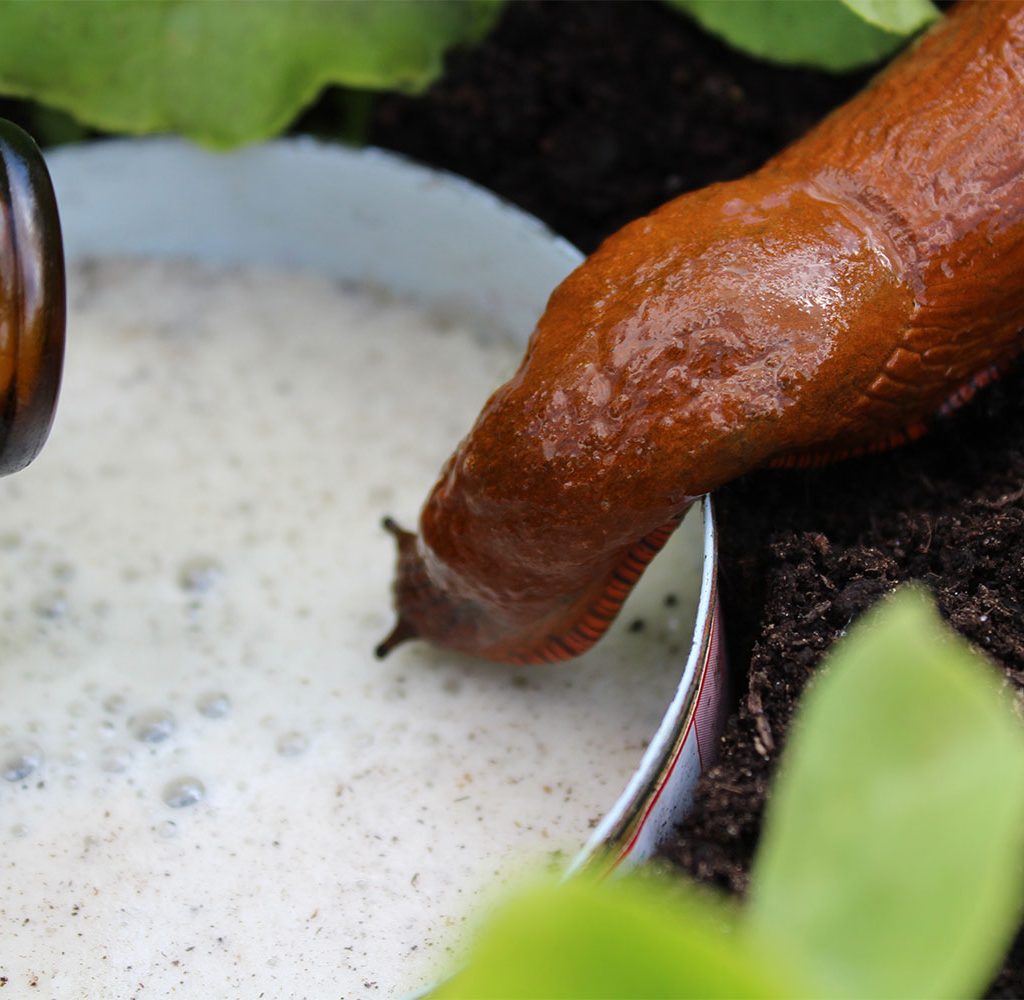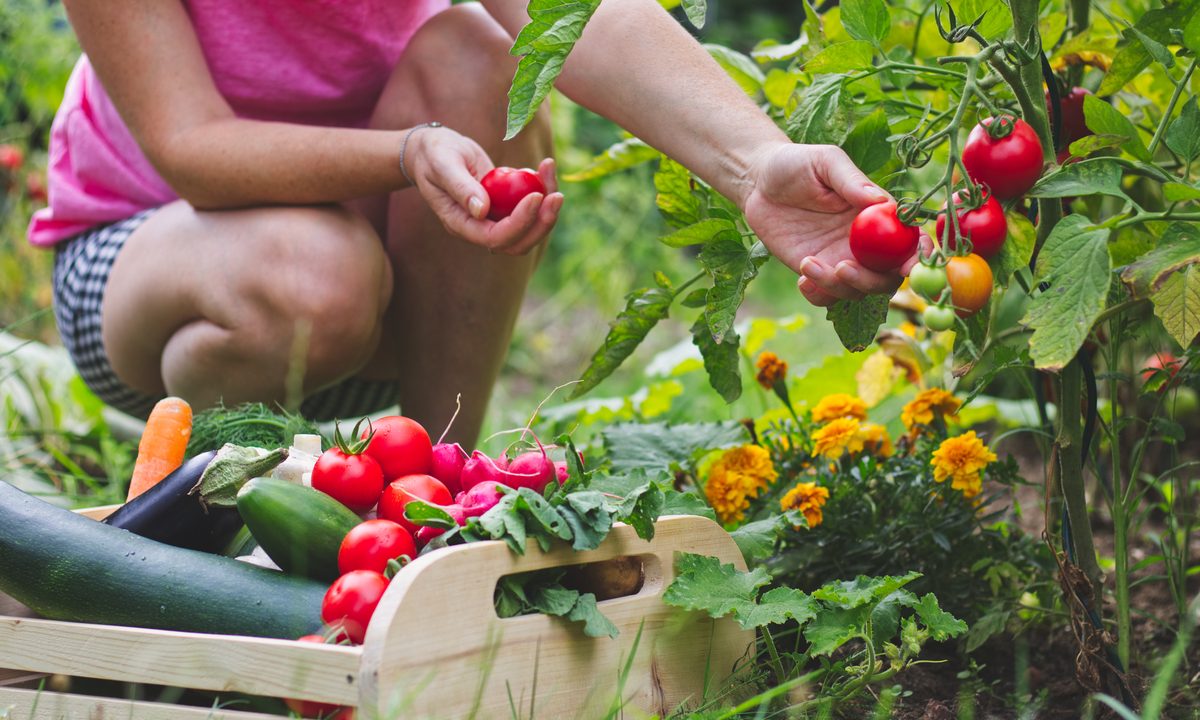Pests can do a lot of damage if they’re given free rein over your garden. This is especially true in October, when the cooling temperatures leave some plants vulnerable, increase the appetites of some pests, and drive others to make winter homes in your garden.
If you’re concerned about how your garden will survive through the fall, you aren’t alone. Don’t worry, though. We’re here to tell you everything you need to know about what pests might be a threat this fall. We'll also tell you how to spot them, prevent them from taking over, and get rid of them if they're already around. Best of all, you can probably set up a good pest defense system with common items you already have on hand!
Depending on the climate where you live, you’re likely to still have garden pests in the fall. If your local climate is very warm this time of year, the fall garden pests will still be actively eating your plants. This makes them easier to find, but it results in more damage to your plants.
On the other hand, if the fall is fairly cool where you live, you’re more likely to see pests go into dormancy or hibernation for winter. This makes them much harder to find and destroy, but it also means you don’t need to worry about plant damage until spring. You’re likely to see the same pests no matter the climate, but your prevention and treatment options will be slightly different.

Identifying slugs and snails
Slugs and snails are both common fall pests. They primarily target leaves and fruit, but they’ll eat just about anything. Two sure signs of slugs and snails are large holes in leaves and trails of slime. They both lay eggs on the undersides of low-lying leaves in the fall. These eggs will hatch a couple weeks later. Young slugs and snails will then wait out the winter beneath any foliage that remains in the garden.

Identifying cucumber beetles, potato beetles, and cutworms
Cucumber beetles, potato beetles, and cutworms all hibernate through winter under the soil in your garden. Cutworms are easy to differentiate. They look like small, gray-brown caterpillars, and they're easily identified by the way they cut down plants by chewing through the stem.
Cucumber beetles and potato beetles can wreak havoc on a fall garden. They get their names because they especially love munching on cucumbers, potatoes, and potato relatives like eggplants and tomatoes. Both types of insects fairly small and have yellow backs. Potato beetles are striped, while cucumber beetles can be striped or spotted. Cucumber beetles tend to be slightly longer than potato beetles.

Deterring slugs and snails
Slugs and snails can be kept out of your garden in a couple different ways. Since they have soft bodies, things with rough, coarse textures can be used to keep them out. And yes, salt will work, but it's best to avoid it because salt can also harm plants and the soil.
Step 1: Set up a barrier of undyed wool around the plants you wish to protect.
Step 2: Instead of wool, you can set up a barrier of leaf mulch, coffee grounds, or eggshells.
Step 3: If the above steps don't work, set up a barrier made of copper tape, wire, or mesh around vulnerable plants. The copper reacts with slug and snail slime to give them a little jolt. The jolt is small enough that not all slugs and snails are deterred, but many are.

Deterring cucumber beetles, potato beetles, and cutworms
Barriers can help keep cucumber beetles, potato beetles, and cutworms out, too. Cutworms are also soft-bodied and likely to react to rough textures, but height is beneficial for all three. A small border that extends a few inches beneath and above the surface of the soil can help significantly.

Deterring slugs, snails, and beetles
A general preventative measure you can take is to encourage predators to visit your garden. For these pests in particular, you’ll have the best luck with birds. Here's how to set up an environment birds will love so that they'll come and eat your plant's predators for you.
Step 1: Set up bird feeders, plant bird-friendly plants, and provide a water source, such as a birdbath.
Step 2: Limit noises from power tools or other machinery.

Getting rid of established pests
If it's too late to deter the pests because they've already set up shop in your garden, here are some ways to get rid of them.
Step 1: Catch and remove.
If you only see a few pests, you can simply pick them up and remove them. However, this isn’t the most efficient way, especially with slugs, which eat primarily at night.
Step 2: Set up a beer trap.
Fill a small dish or tin with beer and leave it out overnight, near where the slugs and snails have been doing most of their snacking. They'll be attracted to the yeast in the beer, especially the non-alcoholic varieties. When they come to take a drink, some will fall in and be unable to get out. Set up multiple traps around your garden for the best results.
Step 3: Use pesticides.
Because slugs and snails aren't insects, pesticides won't actually work on them. However, they'll work on cucumber beetles, potato beetles, and cutworms.
Step 4: Use capsaicin spray.
If pesticides aren’t your style, you can use capsaicin spray instead. This is a natural compound found in peppers, and most pests find it unpleasant to smell or taste.
Step 5: Turn the soil.
Once the weather cools and pests begin burrowing into the soil to sleep, turn over the top layer of soil. You only have to flip the first two inches. This leaves the sleeping pests exposed to the elements and to predators.
Now you’re prepared to protect your garden from all sorts of fiendish pests. The slugs, snails, beetles, and cutworms plaguing your garden won’t know what hit them. Using these tips, your October harvest will be safe at last. Plus, if you take action now, you’ll have significantly fewer pests to deal with when spring arrives.



